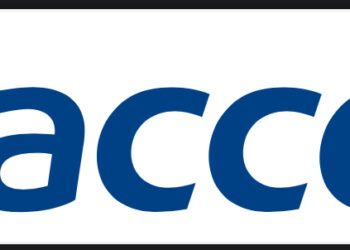Ratings Agency S&P Global has issued its latest opinion on the financial health of Nigeria’s Diamond Bank Plc. The bank was basically downgraded to what they termed “CreditWatch Negative”. We will explain what this all means but before then, here is the summary of the report by S&P.
- Diamond Bank has a tight capital position and faces heightened foreign currency liquidity risks due to a lack of access to dependable sources of foreign currency funds.
- Earnings stability is vulnerable to the economic headwinds in Nigeria and pressure on the Nigerian naira.
- As a result, we are lowering our global scale ratings on Diamond to ‘B-/C’ from ‘B/B’ and our national scale ratings to ‘ngBB/ngB’ from ‘ngBBB-/ngA-3’. We are subsequently placing the long-term ratings on CreditWatch negative.
- The CreditWatch placement reflects our concerns about the proximity of Diamond’s capital adequacy to the regulatory minimum, as well as the bank’s sizable foreign currency contractual liquidity mismatch, given that dependable sources of foreign currency funds are either limited or uncertain in the near term.
What does this mean?
S&P is basically telling investors, shareholders and even the bank that their current financial position is unhealthy which makes the bank vulnerable to more losses. Diamond Bank operates a business model that involves them offering one of the best e-payment channel system in Nigeria. They leverage on that to draw in deposits from retail customers driving down their cost of deposits to about 3%, the lowest in the industry. They then move this less costly deposits into more risky yet lucrative oil and gas and real estate sector loans. Unfortunately, that model hasn’t really worked its magic.
Firstly, the Bank is exposed to the oil and gas sector with about 31% of its total loan portfolio and 12% of loans that are not performing. The oil and gas sector has been doing badly due to the drop in oil prices. This has made most of them unable to service their debts on time as revenues have been severely impacted. Another problem the bank has are loans to cyclical sectors, such as general commerce, manufacturing, and real estate and construction, which together accounted for 40% of total loans and 62% of NPLs as of March 31, 2016.
The result of this is a bank that is about is in danger of declaring more losses from loans issued to its creditors. The bank has made provisions (a part of a loan set aside in anticipation that it might not be recovered in the near term) for bad loans of over N81 billion in the last two years alone. A further provision this year, according to S&P, will send the bank’s capital adequacy ratio below 15%. The Capital Adequacy ratio is basically the approved ratio of a bank’s capital to the number of loans (risk assets) it has in its balance sheet. The ratio set by the CBN for banks.
If Diamond Bank falls below this ratio as S&P suggest it will, the bank will need to raise more equity either from the market or via strategic investors otherwise it could lead to a takeover by the CBN. Let’s hope that never happens.
Get the full report from S&P below;
JOHANNESBURG (S&P Global Ratings) June 22, 2016–S&P Global Ratings today lowered its long- and short-term counterparty credit ratings on Nigeria-based Diamond Bank PLC to ‘B-/C’ from ‘B/B’. We placed the long-term rating on CreditWatch with negative implications.
Similarly, we lowered our long- and short-term Nigeria national scale ratings on the bank to ‘ngBB/ngB’ from ‘ngBBB-/ngA-3′ and placed the long-term national scale rating on CreditWatch negative.
Diamond operates in the middle tier of a highly competitive banking sector, which is facing heightened economic headwinds underscored by oil production and price shocks, slowing economic growth, persistent foreign currency shortages, and depreciation risks.
The bank has a leading franchise position in retail and small business banking in Nigeria. This segment has helped Diamond acquire new customers, increase transaction volumes, especially through electronic channels, and sustain funding costs at around 3%–one of the lowest in the sector. However, this has not translated into advantages in extending loans to top-quality corporates in Nigeria, compared with its top-tier peers with similar funding costs.
At year-end 2015, Diamond reported a sharp 37% rise in nonperforming loans (NPLs) to 7.1%, and a 96% increase in the cost of risk to 6.7%, compared with a peers’ average of about 6.0% and 3.0%, respectively. These increases resulted in low profitability overall and demonstrate the sensitivity of the bank’s assets to the downturn in the economic cycle in Nigeria. We think Diamond’s asset quality and earnings stability is vulnerable to further contraction in Nigeria’s economy over the next 12 months, especially given its balance sheet concentrations, including:
- Sizable sectoral concentration on oil and gas (31% of total loans and 12%of NPLs), most of which has been restructured over the past 12 months by extending the tenor of loans;
- Exposure to other cyclical sectors, such as general commerce, manufacturing, and real estate and construction, which together accounted for 40% of total loans and 62% of NPLs as of March 31, 2016; and
- Single-obligor and foreign currency lending concentrations, where the top-20 loans accounted for about 35% of total loans and one-half of the NPLs at year-end 2015; while approximately 50% of loans were denominated in foreign currency.
We anticipate that the bank’s loss experience will remain a challenge for internal capital generation in 2016 and that the bank will likely sustain a weak risk-adjusted capital (RAC) ratio, according to our own RAC framework, in the 4.0%-5.0% range, from 5.6% at year-end 2015. Positively, the bank has sustained good loan recovery collections and maintained provision coverage over NPLs between 90%-100%, compared with a peers’ average of about 65%.
We think that Diamond’s regulatory capital adequacy ratio of 16.2% on March 31, 2016, offers only a thin buffer above the 15.0% statutory minimum, with which to absorb any unexpected losses or accommodate a significant devaluation in the domestic currency (given the high concentration of foreign currency-denominated assets, some of which are unhedged). Consequently, we consider Diamond’s capital adequacy could be at risk of regulatory forbearance.
In addition, we consider that the bank’s contractual liquidity mismatch, particularly in foreign currency, is a rising risk, given the acute foreign currency liquidity shortages prevailing in Nigeria. At year-end 2015, approximately 20% of Diamond’s deposits were denominated in foreign currency, and although its deposit base has generally exhibited stability over the past few years, it is contractually short tenored and could become confidence sensitive, which may lead to liquidity strain. Similar to peers, we think the bank’s access to foreign currency and ability to refinance its existing U.S. dollar-based liabilities will be constrained in the current environment.
Although Diamond’s business and financial performance over the next 12 months depends on favorable economic conditions in Nigeria, our base-case assumptions do not include a significantly higher probability of default such that we would apply our criteria for rating issuers at ‘CCC’. However, we would consider a scenario in which this could happen if the bank’s access to foreign currency liquidity becomes less certain, confidence risks heighten, or compliance with regulatory capital adequacy becomes a challenge.
We aim to resolve the CreditWatch within the next 90 days, during which time we will assess the possible impact that the changes in Nigeria’s newly-adopted flexible exchange rate regime has on Diamond’s ability to access foreign currency liquidity in the short term and on longer-term economic prospects in Nigeria. We will also take into account the impact that the currency’s effective devaluation will have on Diamond’s capital adequacy.
We could lower the ratings if the following were to materialize:
- Diamond’s regulatory capital adequacy ratio fell below the statutory minimum of 15% over the next 12 months, with no prospect of additional capital injection, debt conversion into equity, or asset sales in the short-term; and the regulator took action to restrict the bank’s operations as a consequence; and
- Diamond experienced liquidity strain in the form of foreign currency deposit calls or if it were less able to meet any other foreign currency obligations on time and in full, owing to limited access to foreign currency funds.
Over the next 12 months, we see limited upside to the ratings, due to the negative economic trends weighing on the bank’s business and financial performance. However, we could affirm the ratings if:
- The bank’s asset quality metrics do not deteriorate beyond our current expectations;
- The bank’s capital and earnings buffers recover and the impact of the currency’s devaluation on the balance sheet is muted, thereby providing ample headroom above its regulatory minimum and allowing the bank to sustain a RAC ratio above 3%; and
- Foreign currency refinancing and liquidity challenges were to abate due to the liberalization of the domestic currency’s exchange rate.






















The reckless manner that the bank has downsized it’s workforce in the past 2 months is indicative of the internal challenges going on in the bank. It is common news that the banks management threw away it’s core staff on May 27th without any form of compensation or pay off. This will sure attract more regulatory sanctions.